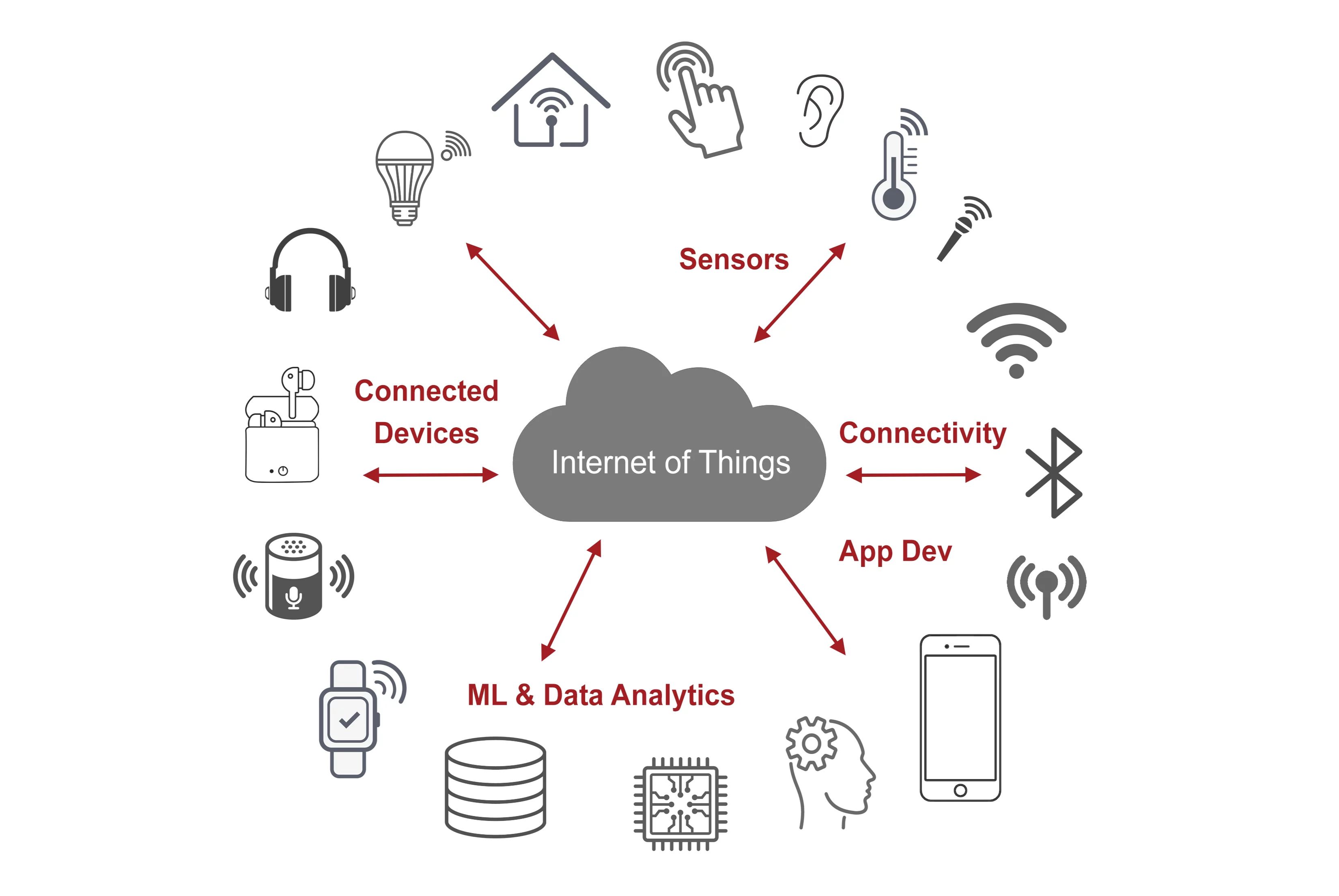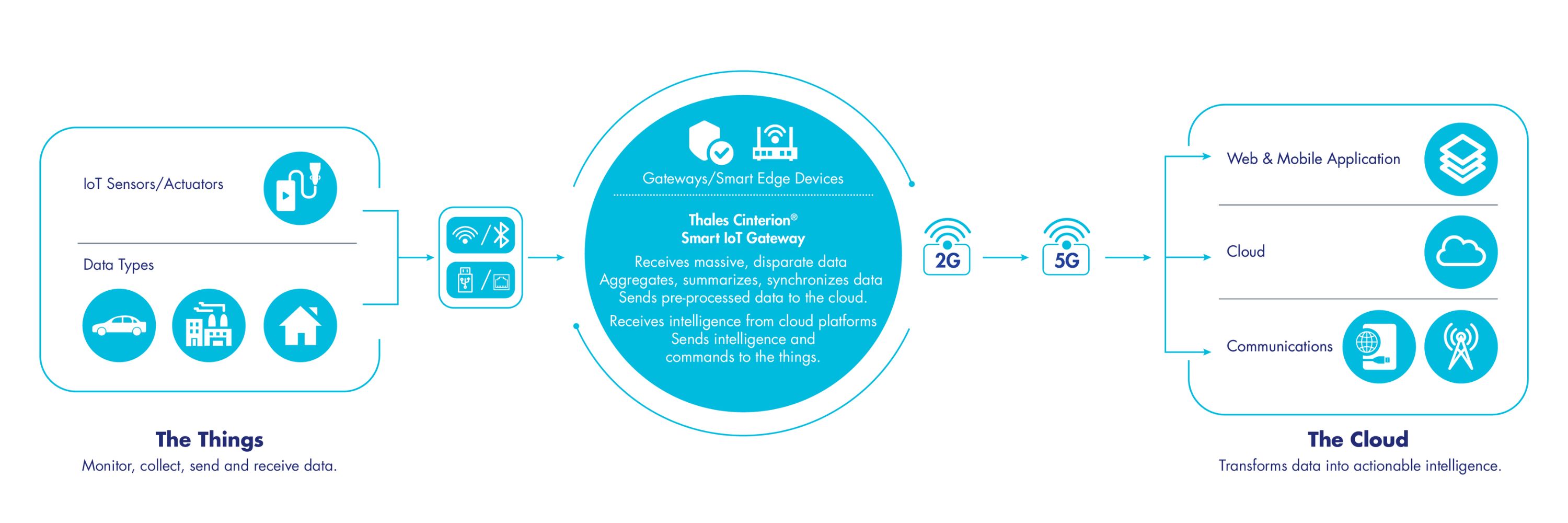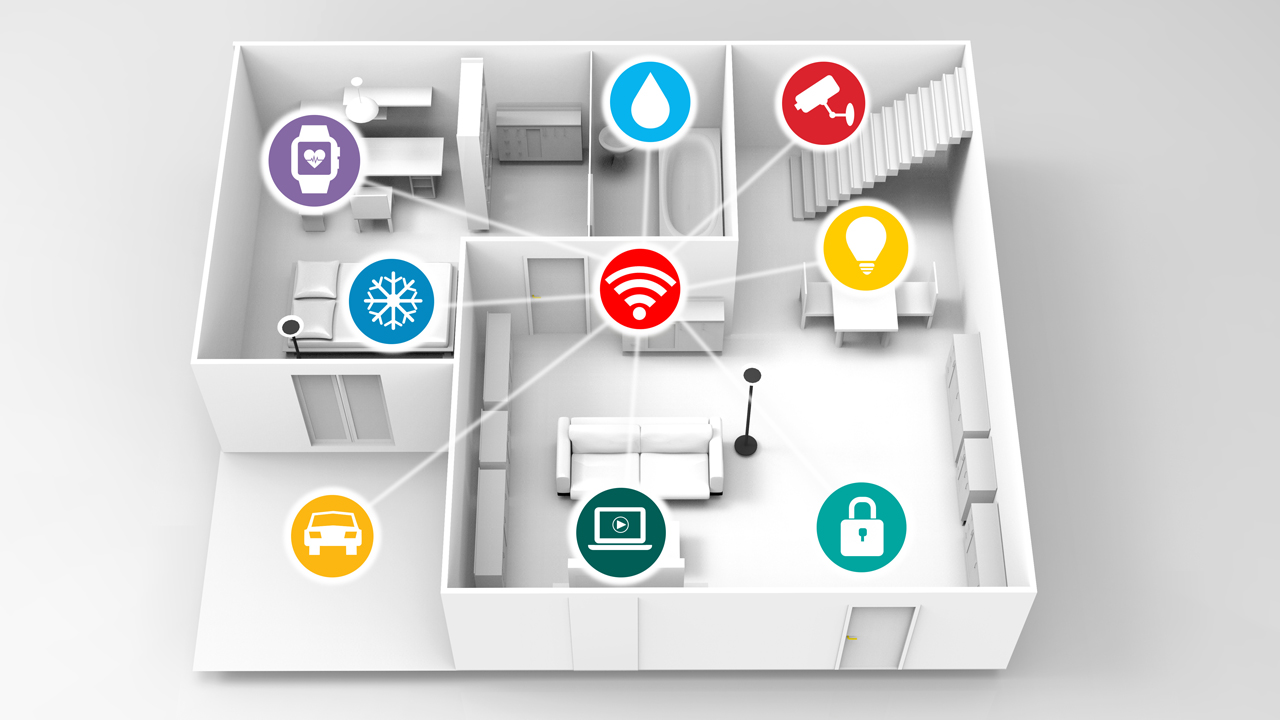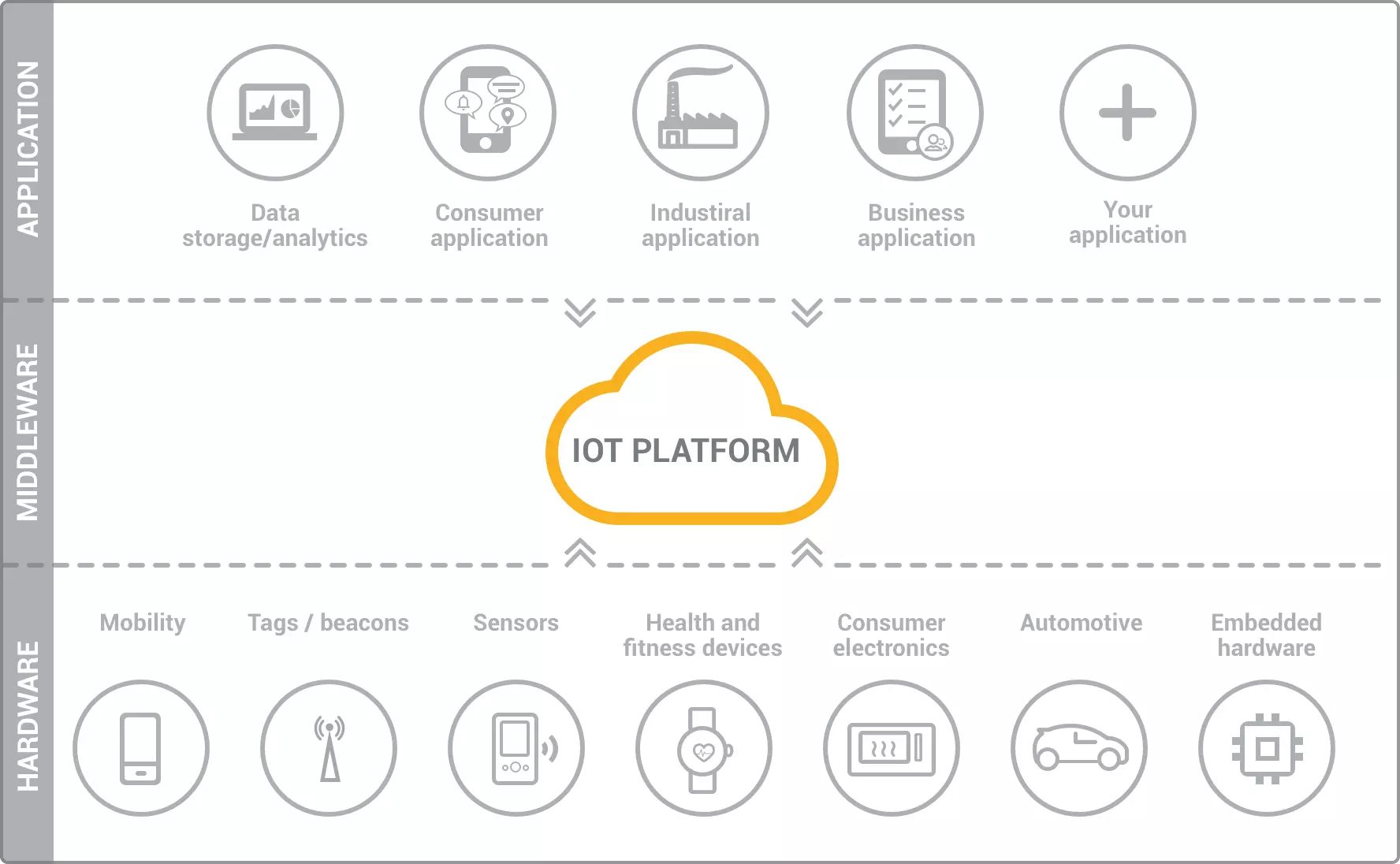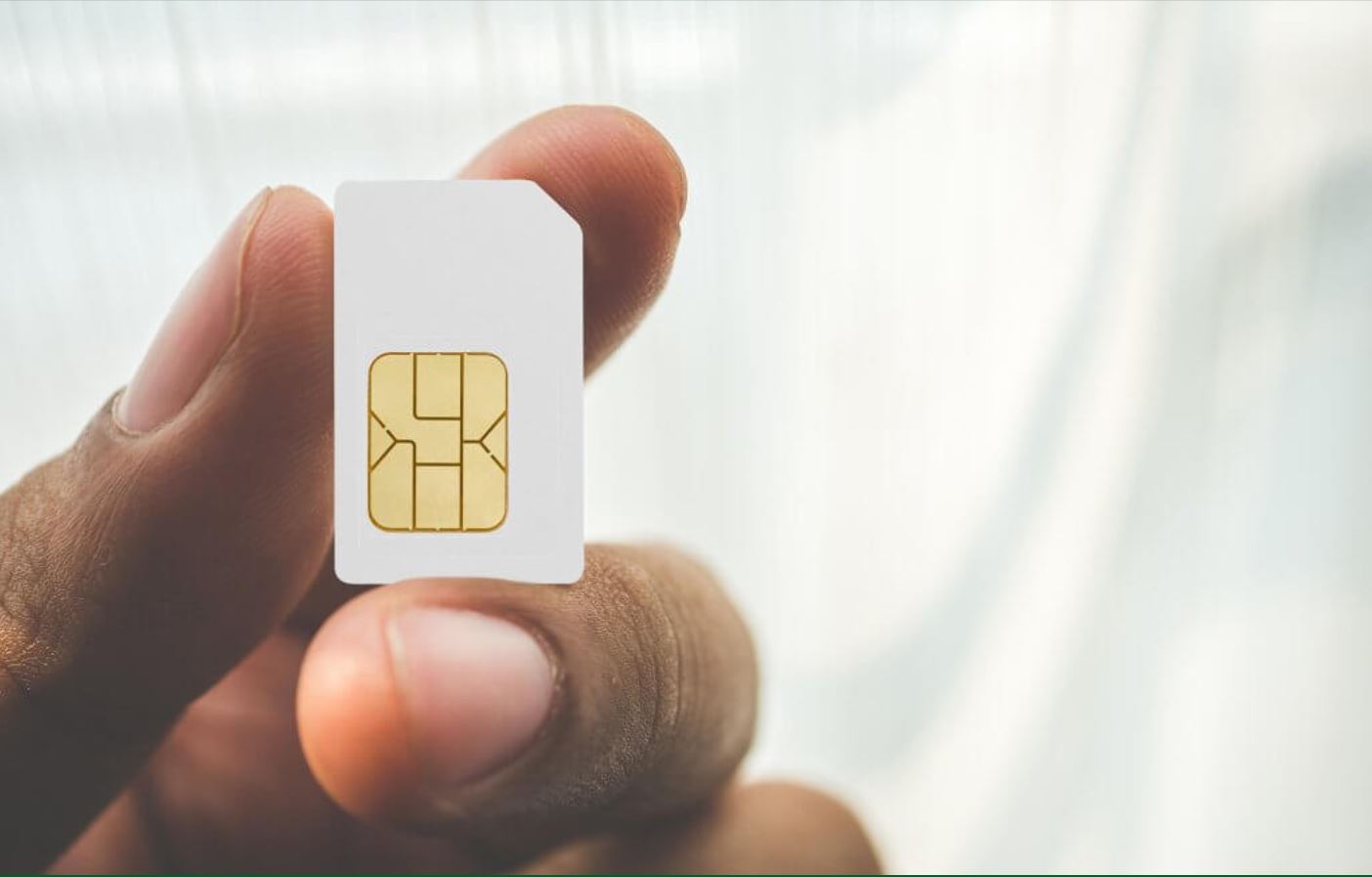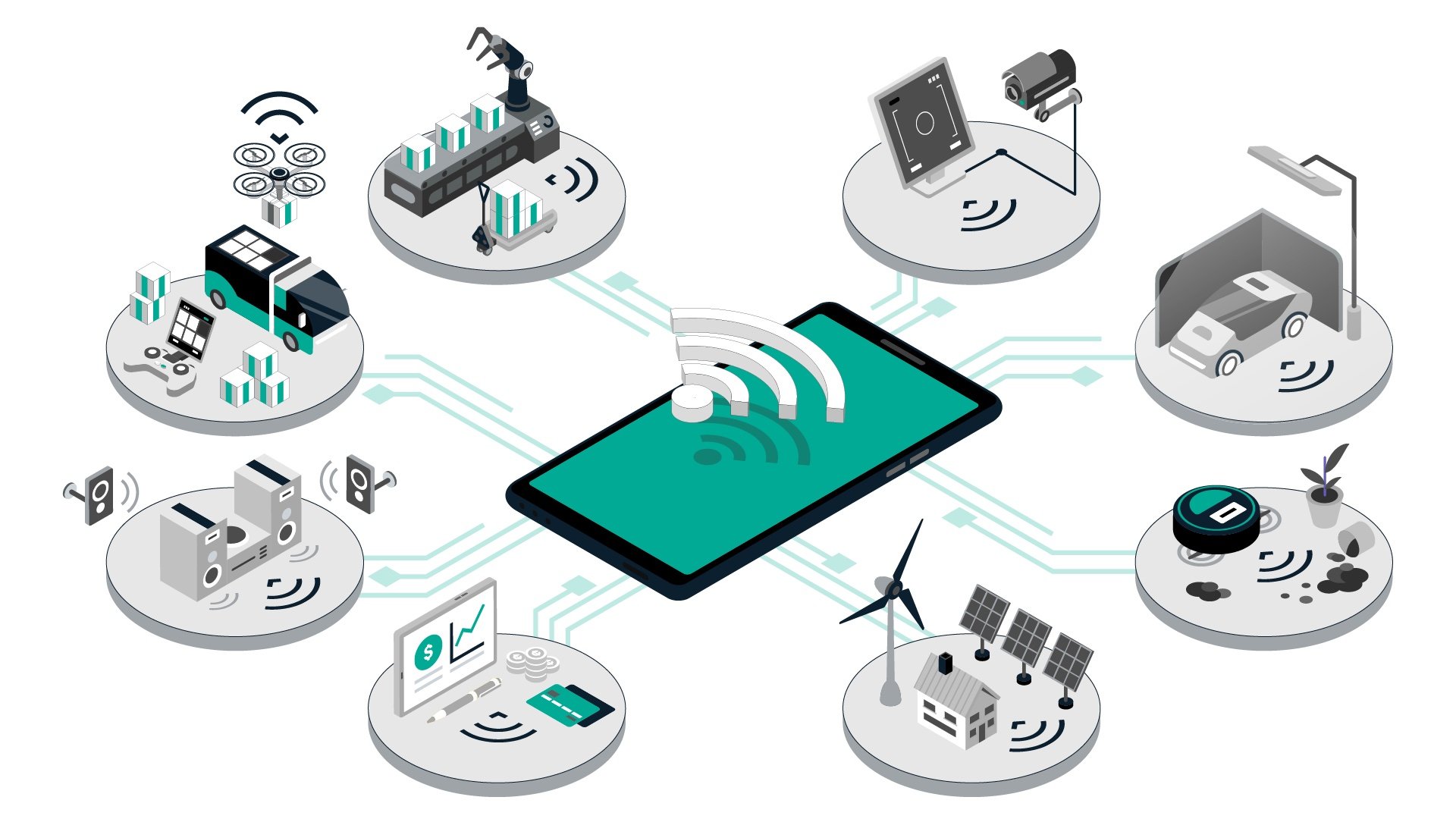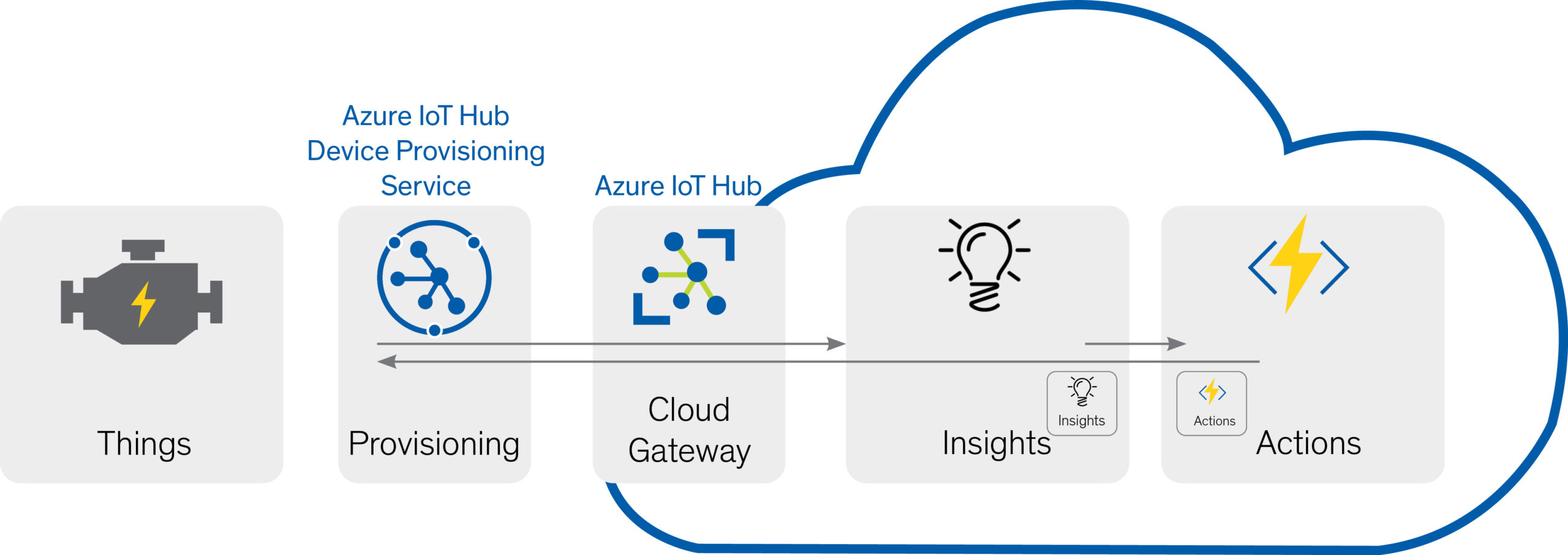Introduction
Welcome to the world of the Internet of Things (IoT), where everyday objects are now being connected to the internet and exchanging information with each other. These interconnected devices are revolutionizing the way we live, work, and interact with our surroundings. From smart homes and wearable devices to industrial machinery and transportation systems, the IoT is transforming various sectors and paving the way for a more connected and efficient world.
One of the key aspects of the IoT is how these devices are connected to the internet and communicate with each other. There are several methods and technologies used to establish these connections, each with its own advantages and use cases. In this article, we will explore some of the most common ways IoT devices are connected.
From wired connections to wireless technologies, IoT devices can be linked together using various methods. Wired connections involve physical cables or wires that transmit data between devices. These connections provide reliable and secure communication, making them ideal for applications where data integrity and speed are essential.
Wireless connections, on the other hand, eliminate the need for physical cables and allow for greater flexibility and mobility. Devices can communicate with each other and connect to the internet through wireless technologies such as Wi-Fi, Bluetooth, and cellular networks. These wireless connections are particularly useful in scenarios where mobility and convenience are key, such as wearable devices or home automation systems.
Let’s take a closer look at some of the popular wireless connection technologies used in IoT devices:
Wired Connections
Wired connections play a crucial role in connecting IoT devices, particularly in industrial settings where reliability and security are paramount. These connections involve using physical cables or wires to transmit data between devices.
An example of a wired connection commonly used in IoT deployments is Ethernet. Ethernet utilizes twisted pair copper or fiber optic cables to establish a network connection. It provides high-speed and stable data transfer, making it suitable for applications that require large amounts of data to be transmitted, such as industrial automation systems or smart infrastructure.
Another wired connection method used in IoT is Power Line Communication (PLC). PLC allows data communication through existing electrical power lines, eliminating the need for additional wiring. This technology is often utilized in smart grid systems or in homes where power outlets serve as the means of communication for various IoT devices.
Wired connections offer several advantages over wireless options. Firstly, they provide a more secure communication channel as the physical medium is harder to intercept compared to wireless signals. Additionally, wired connections tend to have lower latency and higher bandwidth, making them a better choice for real-time applications or scenarios where high-speed data transfer is crucial.
However, wired connections also have limitations. The physical nature of cables restricts mobility, which can be a drawback if devices need to be moved frequently. Furthermore, setting up wired connections may require additional infrastructure and installation efforts, adding complexity and cost to the deployment.
Despite these limitations, wired connections continue to be a reliable and widely-used method for connecting IoT devices. They offer stability, security, and high-speed data transfer, making them particularly suitable for applications that prioritize these factors.
Wireless Connections
Wireless connections have revolutionized the way IoT devices communicate and interact with each other. Unlike wired connections, wireless technologies eliminate the need for physical cables, allowing for greater flexibility, mobility, and ease of installation.
One of the most popular wireless connection methods in the IoT space is Wi-Fi. Wi-Fi provides high-speed wireless internet connectivity, allowing devices to connect to local area networks (LANs) or the internet. It is widely used in smart homes, offices, and public spaces, enabling devices such as smart speakers, thermostats, and security cameras to communicate with each other and the internet seamlessly.
Bluetooth is another ubiquitous wireless technology found in many IoT devices. It is designed for short-range communication, typically within a range of 30 feet. Bluetooth is commonly used in wearable devices, smartphones, and smart home applications. Its low power consumption, ease of pairing, and broad compatibility make it an ideal choice for connecting devices in close proximity.
Zigbee is a wireless protocol specifically designed for low-data-rate applications. It operates in the 2.4 GHz frequency band and provides low-power, low-cost, and secure communication. Zigbee is often used for home automation, industrial controls, and smart energy systems.
A similar wireless protocol to Zigbee is Z-Wave, which operates in the sub-GHz frequency band. Z-Wave offers similar features to Zigbee, with a focus on home automation and IoT applications. One of the advantages of Z-Wave is its mesh networking capability, allowing devices to communicate with each other through intermediary nodes, increasing coverage and reliability.
Cellular networks are also leveraged for IoT connections, particularly in applications that require mobility or are located in areas with limited Wi-Fi coverage. Cellular connectivity enables devices to connect to the internet using 3G, 4G, or now even 5G networks. This is suitable for devices such as GPS trackers, smart vehicles, or remote monitoring systems.
Near Field Communication (NFC) is a wireless technology that enables short-range communication between devices. It is commonly used in contactless payment systems, access control, and identification applications. NFC allows devices to exchange small amounts of data by bringing them into close proximity, usually within a few centimeters.
Wireless connections offer numerous advantages, including easy installation, flexibility, and mobility. However, they are also susceptible to interference, have limited range, and may require more power compared to wired connections. Nevertheless, the convenience and versatility offered by wireless technologies make them a popular choice for many IoT applications.
Wi-Fi
Wi-Fi, short for Wireless Fidelity, is a wireless communication technology that allows devices to connect to a local area network (LAN) or the internet. It has become one of the most widely used wireless connection methods in IoT devices, enabling seamless and high-speed internet connectivity.
Wi-Fi operates in the unlicensed 2.4 GHz and 5 GHz frequency bands, providing reliable and robust wireless communication. Devices equipped with Wi-Fi capability can connect to Wi-Fi access points, also known as routers, which transmit data between the connected devices and the internet.
One of the key advantages of Wi-Fi is its widespread availability. Wi-Fi networks can be found in homes, offices, public spaces, and even in many outdoor areas. This ubiquity makes it convenient for IoT devices to connect to the internet without the need for additional infrastructure.
Wi-Fi also offers high data transfer speeds, especially with the advancements of Wi-Fi 6 (802.11ax) and forthcoming Wi-Fi 6E. These newer standards allow for faster and more efficient data transmission, resulting in improved performance and reduced latency. This is particularly beneficial for IoT applications that require real-time data processing or streaming, such as video surveillance or remote monitoring systems.
Security is another crucial aspect of Wi-Fi. Wi-Fi networks can be secured using encryption protocols such as WPA2 (Wi-Fi Protected Access II) or the newer WPA3. These protocols ensure that data transmitted over the Wi-Fi connection remains encrypted and protected from unauthorized access.
However, there are limitations to Wi-Fi connectivity in IoT applications. The range of Wi-Fi signals can be influenced by obstacles, such as walls or large objects, which may cause signal degradation or loss. Additionally, Wi-Fi is a higher-power consumption technology compared to other wireless protocols, which can affect the battery life of IoT devices.
Despite these limitations, Wi-Fi remains a popular choice for connecting IoT devices due to its versatility and convenience. It enables easy integration with existing Wi-Fi networks, provides fast and reliable internet connectivity, and offers a wide range of compatible devices. From smart home automation to industrial IoT applications, Wi-Fi continues to be a driving force in the seamless connectivity of the IoT ecosystem.
Bluetooth
Bluetooth is a wireless communication technology that allows for short-range data exchange between devices. It has become a popular choice for connecting IoT devices due to its low power consumption, ease of use, and wide compatibility.
Bluetooth operates in the globally available 2.4 GHz frequency band and utilizes short-range radio waves to establish connections between devices. It offers a range of approximately 30 feet (10 meters) but can vary depending on the device’s class and environment.
One of the key advantages of Bluetooth is its low power consumption. This makes it ideal for IoT devices that rely on battery power, such as wearable devices, fitness trackers, and smart sensors. Bluetooth’s power-efficient design allows for extended battery life without sacrificing connectivity.
Bluetooth devices can establish direct connections, known as point-to-point or peer-to-peer connections. This means that two devices can connect to each other without the need for a central network or access point. Bluetooth also supports simultaneous connections, allowing multiple devices to communicate with each other within the same area.
Bluetooth offers different profiles or protocols that define specific use cases and functionalities. For example, the Audio/Video Remote Control Profile (AVRCP) allows for control commands to be sent from a Bluetooth device to control another device’s audio or video playback. The Hands-Free Profile (HFP) enables Bluetooth-enabled devices such as smartphones to connect with hands-free kits for phone calls in cars.
Pairing devices with Bluetooth is a simple and straightforward process. Devices can successfully pair by entering a common passkey or through methods like Near Field Communication (NFC) for quick and hassle-free connections.
One of the limitations of Bluetooth is its relatively short range compared to other wireless technologies. Additionally, Bluetooth’s data transfer speed may not be as high as other wireless protocols, making it less suitable for applications that require large data transfers at fast speeds.
Despite these limitations, Bluetooth’s low power consumption, widespread compatibility, and ease of use make it a popular choice for IoT applications. From connecting smart speakers and headphones to controlling smart devices in a home automation system, Bluetooth enables seamless communication between IoT devices, enhancing convenience and improving the user experience.
Zigbee
Zigbee is a wireless communication protocol specifically designed for low-data-rate applications in the Internet of Things (IoT). It operates in the unlicensed 2.4 GHz frequency band and provides low-power, reliable, and secure wireless communication for a wide range of IoT devices.
Zigbee is well-suited for applications that require long battery life and low power consumption, such as home automation, industrial controls, and smart metering systems. It enables devices to communicate with each other in a mesh network, where messages can be routed through multiple nodes to extend coverage and improve network reliability.
One of the key advantages of Zigbee is its low power consumption. Zigbee-enabled devices can operate for extended periods using small batteries, making them ideal for applications that require long-lasting battery life, such as wireless sensor networks. This enables efficient and cost-effective deployment of IoT devices in various scenarios.
Security is another crucial aspect of Zigbee. It implements strong encryption algorithms to ensure secure communication between devices, protecting sensitive data and preventing unauthorized access. This makes Zigbee suitable for applications that prioritize data privacy and security, such as smart locks or building automation systems.
Zigbee operates in a self-healing mesh network topology, allowing devices to communicate with one another even if an individual device or a connection point fails. This provides robust and reliable communication throughout the network, even in challenging environments where interference or obstructions may be present.
Interoperability is an important feature of Zigbee. It is backed by the Zigbee Alliance, an industry association consisting of numerous companies that develop and promote the Zigbee standard. This ensures that Zigbee-enabled devices from different manufacturers can seamlessly work together, allowing for interoperability and easy integration into existing IoT ecosystems.
Despite its advantages, Zigbee does have some limitations. Its comparatively lower data transfer rate may not be suitable for applications that require high-speed data transmission. Additionally, the range of Zigbee can be limited, typically within a range of 10 to 100 meters depending on the environment and the particular Zigbee device used.
Overall, Zigbee is a well-established wireless communication protocol for low-data-rate IoT applications. Its low power consumption, robustness, security features, and interoperability make it a compelling choice for various IoT deployments, particularly in scenarios that prioritize energy efficiency, reliability, and secure communication.
Z-Wave
Z-Wave is a wireless communication protocol designed specifically for home automation applications in the Internet of Things (IoT). It operates in the sub-GHz frequency band, typically at 868.42 MHz in Europe and 908.42 MHz in North America, providing low-power, secure, and reliable communication for IoT devices.
Z-Wave devices create a mesh network, where each device can act as a repeater, allowing for extended coverage and improved network reliability. This means that messages can be routed through multiple devices to reach their destination, ensuring a robust and efficient communication network.
One of the key advantages of Z-Wave is its low power consumption. Z-Wave devices are designed to operate for long periods on small batteries, making them ideal for applications such as home security systems, smart lighting, and energy management. This low power usage contributes to energy efficiency and cost-effectiveness in home automation deployments.
Security is a critical aspect of Z-Wave. It utilizes encryption algorithms and authentication mechanisms to ensure secure communication between devices. This protects against unauthorized access and maintains the privacy of data transmitted within the Z-Wave network, making it suitable for applications that require secure connectivity, such as smart locks or surveillance systems.
Z-Wave offers wide interoperability, allowing devices from different manufacturers to seamlessly work together. This is facilitated by the Z-Wave Alliance, a consortium of companies that develop and promote the Z-Wave standard. The Alliance ensures that Z-Wave devices are compatible with each other, enabling easy integration and expansion of home automation systems.
Another notable feature of Z-Wave is its long range. Z-Wave signals can typically reach distances of up to 100 meters, making it suitable for large homes or buildings. This allows for wider coverage without the need for additional repeaters or range extenders.
The widespread adoption of Z-Wave in the home automation industry has led to a wide range of Z-Wave compatible devices, including dimmer switches, door/window sensors, smart thermostats, and more. This variety of devices ensures that users have a wide selection to choose from when designing and expanding their Z-Wave-based home automation systems.
Despite its advantages, Z-Wave has some limitations. Its communication speed is lower compared to other wireless technologies like Wi-Fi or Zigbee, making it less suitable for applications that require fast data transmission. Additionally, while Z-Wave is primarily used in home automation, its application in other sectors may be limited.
In summary, Z-Wave is a robust and secure wireless communication protocol for home automation applications. Its low power consumption, wide interoperability, long range, and secure communication make it an attractive choice for creating smart and connected homes.
Cellular
Cellular networks have become an essential part of connecting IoT devices, especially in applications that require mobility or are located in areas with limited Wi-Fi coverage. Cellular connectivity enables devices to connect to the internet using 3G, 4G, or now even 5G networks, providing a reliable and widespread connection.
One of the key advantages of cellular connectivity is its extensive coverage. Cellular networks have a wide reach, spanning across cities, rural areas, and even remote locations. This makes it suitable for IoT devices deployed in various scenarios, such as fleet tracking, remote monitoring, or remote sensor networks.
Cellular networks offer high data transfer speeds, particularly with the advancements of 4G LTE and 5G technology. This allows for real-time data transmission, making cellular connections ideal for applications like video streaming, real-time surveillance, or autonomous vehicles.
Another benefit of cellular connectivity is its ability to provide seamless connectivity while on the move. IoT devices equipped with cellular modules can connect to the network regardless of their location, ensuring continuous communication and data exchange. This is crucial for applications such as asset tracking, vehicle telematics, or mobile healthcare systems.
Cellular networks also provide enhanced security features, including encryption and authentication mechanisms, to protect data during transmission. This is particularly important for sensitive applications that handle personal or confidential information.
While cellular connectivity offers numerous advantages, there are also considerations to be taken into account. The cost of cellular data plans can be higher compared to other connectivity options, especially for large-scale deployments. The power consumption of cellular devices can also be a concern, as continuous data transmission requires more energy compared to lower-power wireless technologies.
Furthermore, cellular networks rely on the presence of network coverage, which can be limited in remote or underground locations. In such cases, alternative connectivity options or hybrid solutions may be necessary to ensure continuous connectivity.
In summary, cellular connectivity plays a vital role in connecting IoT devices, offering extensive coverage, high-speed data transfer, and seamless connectivity on the move. Its widespread availability makes it suitable for various IoT applications, although cost considerations and power consumption should be carefully evaluated for each specific use case.
NFC
Near Field Communication (NFC) is a wireless technology that allows for short-range communication between devices. It operates on the principle of electromagnetic induction and enables devices to exchange data by bringing them into close proximity, typically within a few centimeters.
NFC has gained popularity in various applications, including contactless payments, access control systems, ticketing, and identification. It is widely supported by smartphones, tablets, and other mobile devices, making it a convenient choice for IoT applications that require simple and secure data exchange.
One of the key advantages of NFC is its ease of use. Devices equipped with NFC functionality can establish connections by simply touching or bringing them close together. This feature makes NFC ideal for quick and hassle-free pairing and data transfer between devices, without the need for complex configuration or setup.
NFC operates at relatively low frequencies, typically 13.56 MHz, which allows for short-range communication but ensures efficient and secure data transfer. This frequency range provides enough bandwidth for transmitting small amounts of data, such as contact details, payment information, or authentication tokens.
Security is a fundamental aspect of NFC. The communication between NFC-enabled devices can be encrypted to protect sensitive data from interception or unauthorized access. This makes NFC suitable for applications that involve sensitive information, including payment transactions or secure access control systems.
One limitation of NFC is its short range, as the devices need to be in close proximity for successful communication. This range limitation ensures security and prevents interference, but also means that devices need to be physically close to establish an NFC connection.
NFC is particularly beneficial in scenarios where speed and convenience are crucial, such as contactless payments at retail stores or mobile ticketing for public transportation. Its availability in smartphones and other portable devices makes it a versatile choice for a wide range of IoT applications.
In summary, NFC is a wireless technology that enables short-range communication between devices. Its ease of use, security features, and compatibility with smartphones make it a popular choice for various IoT applications, including contactless payments, access control, and data exchange in a convenient and secure manner.
Ethernet
Ethernet is a wired communication technology that has been the standard for local area networks (LANs) for several decades. It involves the use of physical cables to transmit data between devices, offering a reliable and high-speed connection for IoT applications.
Ethernet uses twisted pair copper or fiber optic cables to establish network connections. These cables are capable of carrying large amounts of data at fast speeds, making Ethernet suitable for applications that require high data transfer rates, such as industrial automation, smart infrastructure, or data centers.
One of the key advantages of Ethernet is its reliability. Unlike wireless connections, Ethernet is not susceptible to interference from other devices or external factors. This makes it a preferred choice for applications that require stable and consistent communication, where data integrity is of utmost importance.
Ethernet also offers low latency, enabling real-time communication and rapid response times. This is crucial for IoT applications that rely on immediate data processing, such as industrial control systems, real-time monitoring, or video streaming.
Another advantage of Ethernet is its long range. Ethernet cables can span long distances, allowing for the connection of devices across large areas or buildings. Repeaters or switches can be used to extend the range or create complex network topologies to suit specific requirements.
Security is a significant aspect of Ethernet connectivity. It is possible to establish secure connections through encryption and other network security measures, ensuring that data transmitted over Ethernet remains protected and confidential.
One consideration with Ethernet is the physical connectivity required. It often involves the installation of cables and network infrastructure, which can be more complex and time-consuming compared to wireless connections. However, once installed, Ethernet provides a stable and reliable connection for IoT devices.
Ethernet has evolved over the years to support faster speeds and higher bandwidth capabilities. From the traditional Ethernet standard (10/100 Mbps) to the more recent Gigabit Ethernet (1 Gbps) and 10 Gigabit Ethernet (10 Gbps), these advancements allow for even higher data transfer rates and improved performance in IoT applications.
In summary, Ethernet is a tried and true wired connection technology for IoT applications. Its reliability, high-speed data transfer, low latency, and long-range capabilities make it ideal for various IoT deployments, especially those that require stable and secure communication.
Power Line Communication
Power Line Communication (PLC) is a technology that enables data communication over existing electrical power lines. It allows for the transmission of data signals alongside the electrical power supply, eliminating the need for separate network cables or dedicated communication infrastructure.
PLC utilizes modulation techniques to superimpose data signals onto the electrical power lines. This enables devices to send and receive data as electrical signals that can be interpreted by other devices connected to the same power network.
One of the key advantages of PLC is its simplicity and cost-effectiveness. Since power cables are already present in most buildings, PLC eliminates the need for additional wiring. This makes it an attractive option for retrofitting existing structures with IoT devices or establishing communication networks in areas where installing dedicated communication cables is impractical or costly.
PLC provides a reliable and stable communication medium, as power lines are shielded and protect the data signals from external interference. This helps to ensure data integrity and reduces the likelihood of signal disruptions caused by external factors.
PLC’s range is typically limited to the electrical grid of a building or a specific power circuit. However, additional hardware like repeaters or signal boosters can be employed to extend the range and cover larger areas.
One limitation of PLC is the potential for signal degradation caused by electrical noise or impedance mismatching within the power lines. Factors such as power fluctuations or different types of electrical loads can negatively impact the quality of the data signal. Proper filtering and noise reduction techniques are often employed to mitigate these issues and ensure reliable data transmission.
PLC is commonly used in smart grid systems to enable communication between devices in the power distribution infrastructure, such as smart meters and grid management systems. It is also utilized in home automation applications, where IoT devices can communicate with each other using the existing power lines.
Security is an important consideration in PLC. Encryption and authentication mechanisms can be employed to protect data transmitted over the power lines from unauthorized access or tampering. This ensures the confidentiality and integrity of the data exchanged between connected devices.
Overall, Power Line Communication offers a unique and practical solution for transmitting data over existing power lines. Its simplicity, cost-effectiveness, and reliability make it a viable choice for IoT applications, particularly in scenarios where dedicated network wiring is difficult or expensive to install.
Mesh Networks
Mesh networks are a type of network topology where devices communicate with each other through multiple paths, forming a decentralized and self-configuring network. In the context of IoT, mesh networks offer several advantages, including increased coverage, improved reliability, and flexibility in expanding the network.
In a mesh network, each device, or node, can act as a relay for other nodes, allowing data to be transmitted from one node to another until it reaches its intended destination. This eliminates the need for a central access point or a single point of failure, making the network more resilient to node failures or network disruptions.
One of the key advantages of mesh networks is their ability to extend the coverage area. Nodes in the network can communicate with each other directly or through intermediate nodes, creating multiple communication paths. This ensures that data can be transmitted over longer distances without the need for individual nodes to be within range of a central device.
Mesh networks also provide improved reliability. If one node fails or encounters an obstacle, the network can automatically reroute data through alternative paths. This dynamic routing capability ensures that data can still reach its destination even in the presence of disruptions or congestion in the network.
Furthermore, mesh networks are flexible and scalable. New nodes can be added to the network without significant configuration or reconfiguration of existing nodes. This makes it easier to expand the network and adapt to changing IoT deployment requirements, such as adding new sensors or devices in a smart home or expanding the coverage area in a smart city.
Mesh networks can operate using various wireless communication protocols, such as Zigbee, Z-Wave, or Wi-Fi. Each protocol offers its own advantages and use cases, allowing for flexibility in choosing the appropriate technology for the specific IoT application.
Despite the advantages, there are considerations with mesh networks. The more nodes added to the network, the more complex the routing becomes, which can impact the overall network performance. Additionally, the reliance on multiple communication paths can lead to increased latency compared to point-to-point communication.
In summary, mesh networks offer increased coverage, improved reliability, and scalability for IoT deployments. Their self-configuring and decentralized nature make them suitable for applications where resilience, flexibility, and ease of expansion are important considerations. Whether used in smart homes, industrial settings, or smart cities, mesh networks provide a robust and adaptable infrastructure for interconnected IoT devices.
Hybrid Connections
Hybrid connections combine different types of connectivity methods to create a robust and flexible network for IoT devices. By leveraging the strengths of multiple connection technologies, hybrid connections offer increased reliability, extended coverage, and improved performance in various IoT applications.
One example of a hybrid connection is combining a wired connection, like Ethernet, with a wireless connection, such as Wi-Fi or cellular. This integration allows for a seamless transition between the wired and wireless networks, providing continuous connectivity even if one connection method experiences interruptions or signal degradation. For example, a device may initially connect through Ethernet but switch to Wi-Fi or cellular when it moves outside the reach of the wired network.
Another hybrid connection approach involves combining short-range wireless protocols, such as Zigbee or Z-Wave, with a long-range wireless connection like cellular. This setup enables IoT devices to communicate with each other using the low-power and low-latency short-range protocols while leveraging the widespread coverage and mobility offered by cellular networks.
One of the benefits of hybrid connections is their ability to optimize the network performance and reliability based on the specific requirements of different IoT devices or applications. For example, devices that require high-speed data transfer or low latency, such as video surveillance cameras, can utilize a wired connection for maximum performance. On the other hand, battery-powered devices with limited power usage requirements can use low-power wireless protocols to conserve energy.
In addition to enhancing reliability and performance, hybrid connections also provide flexibility and scalability. As IoT applications continue to evolve and expand, the ability to integrate new technologies or adapt to changing circumstances is crucial. Hybrid connections allow for the seamless integration of new connectivity methods or the scaling up of the network to accommodate increasing device density or coverage area.
However, there are considerations when implementing hybrid connections. Integration and management of multiple connection types may require additional resources and configuration efforts. The complexity of the network infrastructure and potential compatibility issues between different technologies can also pose challenges.
In summary, hybrid connections combine different connectivity methods to create a robust and flexible network for IoT devices. By incorporating wired and wireless connections or integrating multiple wireless technologies, hybrid connections provide increased reliability, extended coverage, and improved performance. Their ability to optimize network resources, adapt to changing requirements, and seamlessly integrate new technologies makes them a valuable solution in various IoT applications.
Conclusion
In the world of the Internet of Things (IoT), the connectivity of devices plays a crucial role in enabling seamless communication and data exchange. Wired and wireless connection technologies offer a variety of options to connect IoT devices, each with their own advantages and considerations.
Wired connections, such as Ethernet and Power Line Communication (PLC), provide reliable and secure data transfer, making them ideal for applications that require high-speed and stable communication. Wired connections are known for their robustness, data integrity, and low latency, making them well-suited for industrial settings and applications where reliability is paramount.
Wireless connections, on the other hand, offer mobility, flexibility, and ease of installation. Technologies like Wi-Fi, Bluetooth, Zigbee, Z-Wave, and cellular networks enable devices to communicate without constraints imposed by physical cables. Wireless connections are highly suitable for applications like smart homes, wearable devices, and tracking systems, where mobility, convenience, and scalability are essential.
Hybrid connections combine different connectivity methods to leverage the strengths of each technology. Hybrid connections allow for enhanced reliability, extended coverage, and improved performance by seamlessly integrating wired and wireless connections or combining multiple wireless technologies.
Choosing the right connection method or a combination of methods depends on the specific requirements of the IoT application. Factors such as power consumption, range, data transfer speed, mobility, and security considerations should be taken into account to ensure the optimal connectivity solution.
As the IoT ecosystem continues to evolve, connectivity technologies will evolve as well. Advancements in wireless standards such as Wi-Fi 6, 5G, and emerging technologies like LPWAN (Low Power Wide Area Network) will continue to shape the landscape of IoT connectivity, allowing for even faster speeds, increased coverage, and lower power consumption.
In conclusion, the variety of wired and wireless connection technologies available for IoT devices offers flexibility, scalability, and reliability. The choice of connection method depends on the specific use case and requirements of the IoT application, and the combination of different connection methods can further optimize performance and reliability. By selecting the most suitable connectivity options, IoT applications can thrive in a connected and efficient ecosystem.







